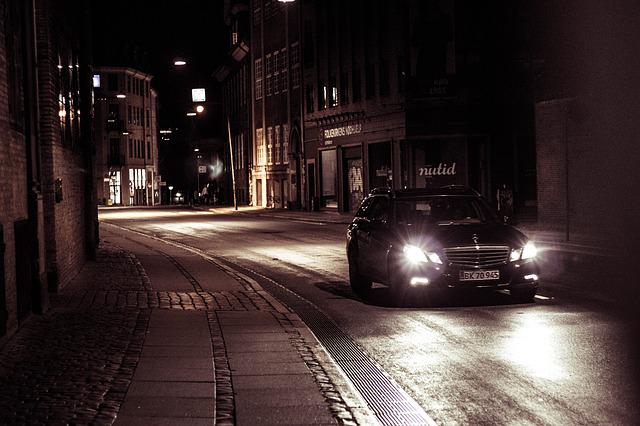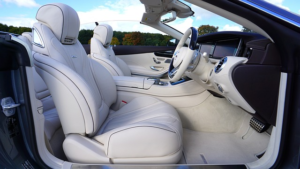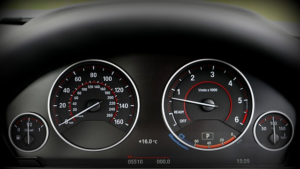Idaho’s road ahead for electric vehicles: More cars and charging stations, many questions – East Idaho News
BOISE (Idaho Statesman) — There were 4,508 electric vehicles registered in Idaho as of July 2022.
It’s a tiny fraction of the state’s 1,760,650 total vehicles, but it’s a number that has grown dramatically.
In June 2021, just 2,685 EVs were registered in Idaho, according to data from the Idaho Department of Motor Vehicles, representing strong year over year growth. And …….

BOISE (Idaho Statesman) — There were 4,508 electric vehicles registered in Idaho as of July 2022.
It’s a tiny fraction of the state’s 1,760,650 total vehicles, but it’s a number that has grown dramatically.
In June 2021, just 2,685 EVs were registered in Idaho, according to data from the Idaho Department of Motor Vehicles, representing strong year over year growth. And with new federal funding for charging stations from the National Electric Vehicles Infrastructure program, or NEVI, that number may continue to grow in an age of climate change impacts and surging gas prices.
NEVI, established in November 2021 under the Bipartisan Infrastructure Law, will distribute $5 billion in funding to states for the purpose of building out EV networks across the country.
The Federal Highway Administration estimates that Idaho will receive nearly $30 million of that money over a 5-year period. The state has submitted a plan to the federal government, but its process of investigating sites for chargers and Idaho-specific exemptions from the program’s requirements likely will take another year, Richard Stover, the administrator for the Idaho Office of Energy and Mineral Resources, told the Idaho Statesman.
RELATED | Idaho receives $28 million to build EV charging stations every 50 miles of interstate
The office is working with the Idaho Department of Transportation and the Idaho Department of Environmental Quality on the long-term project.
The program aims to build out a national network of 500,000 charging stations. There are just over 50,000 public charging stations in the U.S. now, with about 125,000 available charging ports, according to the U.S. Department of Energy Alternative Fuels Data Center.
Idaho has just 112 public electric vehicle charging stations with a total of 275 public charging ports, placing the state 42nd in the nation in terms of available stations.
NEVI PROGRAM INCLUDES REQUIREMENTS FOR CHARGING NETWORK
NEVI requires states to build a charging station every 50 miles along alternative fuel corridors — or designated roads along which a state plans to build out alternative fuel infrastructure.
States nominate which roads should be considered. States are encouraged to use interstates as their corridors, but in places with a less dense interstate highway system, the corridors often include state and U.S. routes as well. Idaho’s alternative fuel corridors are Interstates 15, 84, 86 and 90; state routes 1 and 55; and U.S. routes 12, 20, 40, 93 and 95.
Charging stations must be as close as possible to the corridor and no more than a mile away from an off-ramp or other highway exit.
To qualify for NEVI funding, chargers also must be 150 kilowatt direct current chargers, also known as DC fast chargers, or Level 3 chargers. Using a direct current can charge an EV battery most of the way in less than an hour, according to the website for ChargePoint, an electric vehicle infrastructure company.
RELATED | From distance to the power grid, electric vehicles face fair share of challenges in rural Idaho
ChargePoint has charging stations around the city of Boise and the Treasure Valley. So do companies such as Electrify America, SemaConnect, Volta, Blink and Tesla.
States cannot use NEVI money to build other, slower charger types, known as Level 1 and Level 2 chargers. The ChargePoint website says a Level 1 charger can take between 17 and 25 hours to fully charge a vehicle, and a Level 2 charger takes 4-5 hours. DC chargers are more expensive to use than Level 1 and Level 2 chargers, but way faster.
Another goal of the NEVI program is to bring EV infrastructure to rural, minority and otherwise underserved communities.
“In a rural state like Idaho, we shouldn’t have any problems with that,” Stover said.
IDAHO PRESENTS UNIQUE CHALLENGES IN CHARGING STATION ROLLOUT
Some stipulations might be difficult to adhere to in Idaho, though, with its large swaths of sparsely populated and remote land, and less dense interstate highway system.
One of those requirements is the 50-mile interval rule, Stover said. He said he expects Idaho to apply to have that rule waived in multiple locations.
“There’s a mechanism under the NEVI program by which states can request exceptions to the requirements,” Stover said.
“We’re a large landmass state, and we have a lot of federal land, so delivering the power to sites in remote locations is going to be an obstacle to address.”
States are not required to build exclusively along interstates, but Mike Heckler, a co-founder of the nonprofit Clean Energy Opportunities for Idaho, said starting the build-out on other Alternate Fuel Corridor Highways could conflict with Federal Highway Administration guidelines.
Heckler said he thinks states like Idaho should have more flexibility to use NEVI money on other roads in the early years of the program, instead of starting only with the interstates.
Aubrie Spence, an Idaho Department of Transportation spokesperson, told the Statesman in an email that building charging stations in rural areas is difficult and expensive. She said gauging consumer interest for electric vehicles in Idaho is another challenge the state will face during this process.
PROCESS FOR ADJUSTING NEVI STIPULATIONS FOR IDAHO
One of the first steps in the process was presenting a state-level plan to the federal government, Stover said. Idaho submitted its plan on Aug. 1 and is expecting feedback by the end of September. This plan detailed a “broad range of information,” including the state’s goals, efforts to date, infrastructure, geography, public involvement and other factors.
Stover said the state is investigating the best sites for charging stations in Idaho and what adjustments to the NEVI requirements might be necessary. Once the investigation is complete, the state can request those adjustments. That research period likely will last about a year, he said.
“In particular, the 50-mile requirement is one that that we are aware of that we will likely need to exercise our request,” he said.
Stover said seeking a waiver to the 50-mile rule likely will be a common request throughout the West, where geography, the size of the states and the demographics do not lend themselves to such a setup. But he said states cannot request a blanket exemption from that stipulation and must specify which stretch of a corridor be exempted.
Idaho also might request exemptions from the rule specifying charging stations be within a mile of an off-ramp or exit. Stover said the state is still investigating that aspect of the project.
EV INFRASTRUCTURE SHOULDN’T STOP WITH NEVI, EXPERTS SAY
Heckler said DC fast chargers make sense for traveling long distances by car, but most charging happens when people are at work or at home. He said he’d like to see large employers install chargers in their office parking lots for employees to use during the day — an ideal time to use solar power for Level 2 charging stations.
“It’s just the nature of our electrical system that between 9 a.m. and 2 p.m., solar output rises much more rapidly than electrical load. There’s a surplus of power available. That’s the logical time to recharge vehicles, while they’re sitting at work,” Heckler said.
The cost of building these chargers would fall to employers, though, Heckler said. They would not be eligible for federal funding as non-DC fast chargers not located on an alternative fuel corridor.
FUNDING FOR CHARGING STATIONS THROUGH STATE PROGRAM
A news release from DEQ and the state energy office issued on Sept. 1 indicated that money from the state Electric Vehicle Supply Equipment Program would be used for charging infrastructure at a dozen places in Idaho, including ports that were already available to the public in Lewiston, Hailey, Coeur d’Alene and Bonners Ferry.
In all the funding, totaling $2.6 million, will be used for 48 charging ports statewide, in places such as Grangeville, Kamiah, Driggs and Arco.






